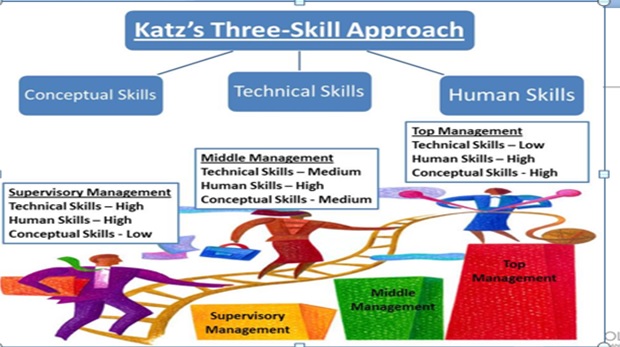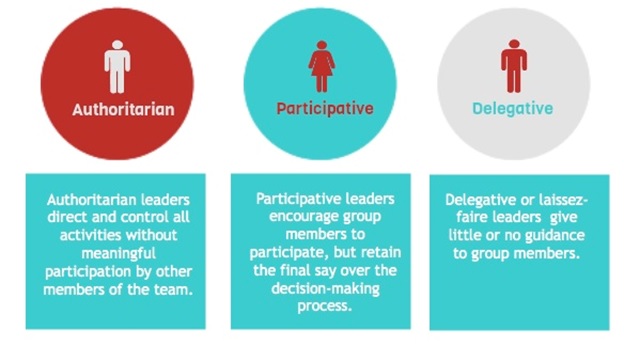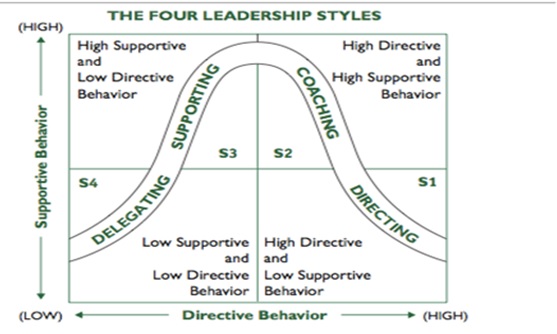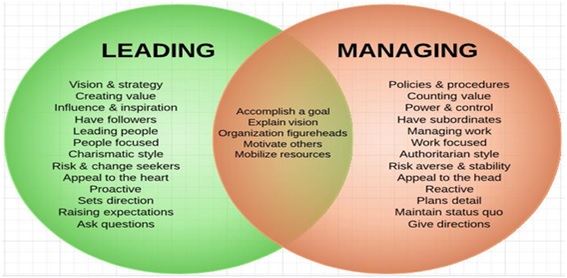Leadership And Management Sample Assignment
Question 1
What is involved in being a successful leader?
Leadership is the process by which an individual or a group of individuals, working in a particular organization or on a particular project, are influenced to work for the realization of the organizational or the project goals, by the assigned leader (Goleman, 2017). Good leaders need to possess a combination of the traits, skills and style in equal amounts, to be able to influence and motivate other people to work as per their required objectives.
Individual
Traits
As per the Big Five Personality model and theory, neuroticism, extraversion, openness, agreeableness and conscientiousness are the five character traits that decide the suitability of the individuals for being a successful leader (Judge and Zapata, 2015). The neuroticism refers to the tendency of being vulnerable and hostile and exhibiting anxiousness and depression in all situations; this trait should be minimally present in successful leaders. Extraversion refers to the tendency of being sociable and amiable, with lot of positive energy for influencing the employees and subordinates; this should be present among successful leaders largely, since the leaders should be able to motivate the employees and influence them positively, for the realization of the organizational goals. Openness refers to the character of being creative, curious and well-aware of all the situations; this is particularly required in case of a leader since s/he should be aware of the strengths and weaknesses of his team members as well as the most appropriate way for leading the team under different situations. Agreeableness and conscientiousness are two other character traits that enable the leaders to be adaptive to different situations, able to take decisions under all circumstances and regulate as well as coordinate with the employees, for the execution of the tasks rendered. Bill Gates is an exemplary leader who exhibited the characteristics like openness, agreeableness and extraversion and minimal neuroticism.
Skills
This approach refers to the abilities of the individual to learn and develop their skills appropriately, in order to be a successful leader. Katz’s three skills approach model can be used for explain the skills approach of leadership. As per Katz’s model of leadership, there are three basic skills viz. the technical, conceptual and human skills, which help the leaders to be successful in their endeavors. As per this model, the leaders, through experience and exposure to the business sector, learn the skills of leadership, in order to be able to be proficient in their tasks. The technical skills includes the ability to analyze data as well as situations and adopt decisions accordingly, using appropriate tools and techniques to aid in the business processes and help the employees to execute their tasks flawlessly and be able to develop competencies in specialized areas (Saucier and Srivastava,, 2015). The conceptual skills encompasses the ability of the leaders to strategize effectively, for the realization of the organizational objectives and frame work plans for the employees, so that their actions can be regulated and overseen effectively. This also encompasses development of problem-solving abilities of the individuals, The human skills includes the abilities to be able to motivate the employees and influence them, by gaining their trust as well as be able to involve the subordinates in the decision-making process and possess knowledge about their views, which makes managing people easier. The leaders should also be able to manage the human resources of the organization, by solving all their grievances and resolving all their demands. The employees need to be provided proper incentives and rewards, for recognizing the efforts that the employees put in the development of the organization and in the execution of the tasks that they are assigned to handle (Shahid and Azhar, 2013). The leaders also have to be able to understand the views put forth by the employees and their demands; the analytical skills of the leaders should be able to help them to gauge the implications of the demands and grant them, if possible. This would help in building positive employee relationships and work culture in the organization. The Steve Jobs is a leader who exhibited brilliant conceptual skills as well as problem-solving abilities, which allowed him to lay the foundation of Apple and manage it effectively.

Fig 1: Katz’s Three Skill Approach
Source: (Saucier and Srivastava,, 2015)
Styles
According to Lewin, there are three predominant leaderships that need to be resorted to by the leaders, under different circumstances. The democratic leadership is followed when the leader wants to involve all his subordinates in the decision-making process and consider the views of all the employees, before concluding on a decision. The autocratic leadership, on the other hand, is to be resorted by the leaders under circumstances when the employees do not have a clear knowledge or idea about the ways they are required or expected to respond. In this, the decisions of the leader are binding on the employees and they are required to act as per the instructions of their leaders. The third kind of leadership, Laissez-Faire, is resorted to, by the leaders when the employees are capable enough to manage all the issues, since in this kind of leadership, the leaders have a limited role to play in the decision-making process and the responsibility lies majorly with the employees. Most of the organizational leaders like Bill Gates and Steve Jobs resorted to democratic leadership within their organization, in order to encourage the employees to perform independently and boost their creativity quotient. The advantages of the different kinds of leadership are that they help in influencing the employees and aligning them to work for the development of the organization. The disadvantages of the leadership systems are that the there are different weaknesses of different leadership systems, the Lassiz-faire leads to over-reliance on the decisions and performance of the employees, which in turn, holds threat for affecting the performance of the organization adversely.

Fig 2: Lewin’s leadership styles
Source: (Northouse, 2018)
Contextual
Situational Approach
Hershey and Blanchard’s Situational Approach model can be used for understanding the different roles that a successful leader is expected to follow, under different situations, in order to be able to lead and influence the employees for working as per the organizational policies, for the development of the organization. According to this model, there are four different styles that needs to be followed by the leaders, under four different situations (McCleskey, 2014). The styles are directing, coaching, supporting and delegating wherein the leaders are expected to deliver varying amounts of support and direction to the employees, for the completion of the task, at various different stages indicated in the graph (Fig- )

Fig 3: Hershey Blanchard’s Situational leadership Model
Source: (Thomps. and Glasø, 2018)
The situational approach of leadership is very practical and beneficial for training the employees; moreover the ease with which it can be conceptualized and applied under different situations vouches for its popularity. The only disadvantage of this model is that the ways in which the existent demographics in a particular organization affect the applicability of the model in the organization.
Relational
Transformational leadership
Transformational Leadership encompasses the process of positively engaging with the employees, for motivating them and gaining their trust in the actions of the leader, so that a positive relation and work culture exists within the organization. Idealizing the influence, providing inspirational motivation, stimulating intellectually and considering the individual views of the subordinates are the basic tenets of transformational leadership (Schmitt et al., 2016). According to this, in order to become a successful leader, the individuals are required to exhibit abilities of acting as a role model for the other employees to follow, provide a valid vision and goal for the employees to work for as well as inspire and motivate the employees to perform for the realization of the vision. Supporting the creativity of the subordinates and encouraging them as well as listening to the demands of the subordinates and address them effectively, in order to become a successful leader, are also factors aiding transformational leadership and aids the individuals to become successful leaders.
Question 2
Can good leadership be developed, and if so, how?
Leadership is the quality of influencing the employees to work for the achievement of a common goal. Most of the qualities exhibited by the successful leaders can be developed over time; however, some traits, which are a part of the character of the individuals, cannot be learnt and are inherent for the individuals. This section aims to discuss the ways in which good leadership practices can be developed among the individuals.
Individual perspective
The individual perspective deals with the traits skills and styles that are expected to be exhibited by successful leaders. The traits of a successful leader includes intelligence, alertness, responsibility and few similar such characteristics which becomes a part of the personality of the individuals at a very tender age. Learning and acquiring these characteristics are greatly influenced by the kind of family life and the kind of upbringing experienced by the individuals and is difficult to be learnt at later stages of life. The child for example, who lives with very ambitious parents, also grows up to dream big and those with very strict parents develop an innate habit of being authoritarian whenever given a responsibility to handle. These become innate characteristics of individuals and thus, are highly difficult to be changed. The skills, on the other hand, like the analytical skills and the abilities to adopt decisions appropriate to meet the demands of particular situations, can be learnt through experience. The ability to choose from the different styles of leadership, and align it with the performance of the employees, can also be learnt by the individuals, through practical experience. The leaders who already possess the effective leadership skills need to improve in order to maintain their efficacy. The leaders need to improve their skills as per the existing standards in the industry and as per the situations existent within the organization.
Contextual perspective
The leaders need to act as per the situations and adapt to the changing work environments better in order to be able to influence and motivate the employees adequately. The Situational leadership model, as outlined previously, helps in the identification of the changes in the behavior of the leaders with the change in the quality of the employees as well as their experiences and abilities. When the employees are new to the organization, then there is need for the team leaders to act in an authoritarian manner and direct the employees to perform their tasks. On the other hand, when the team members are experienced enough to handle different situations and work effectively under all kinds of pressure, then the team leader can adopt a delegative role and can be minimally involved in the decision-making process of the department. Similarly, when the employees are being trained for being able to perform all the responsibilities bestowed upon them, the leaders require to be equally supportive as well as authoritative, so that the employees can be effectively guided through the process. All these different aspects of decision-making regarding the different leadership roles that needs to be followed, under different situational contexts within the organization can be learnt by the leaders and thus, good leadership practices can be developed effectively.
Relational perspective
The leaders need to establish effective relations with the employees as well as their subordinates, in order to ensure the existence of positive work culture in the organization. Communication is one of the major means of establishing effective relations with the employees and can be used as the most effective means of communicating the vision of the organization as well as motivating the employees for performing towards the development of the organization. The leaders, to remove existent communication gap among the employees and ensure that all the decisions adopted by the management are communicated through all the levels of the organization, resort to the direct and indirect means of communication. The communication processes also helps in building trust among the employees and motivating them for performing towards the development of the organization. Developing on the ways of effective communication, like resorting to body language apart from speech that is delivered to the employees can serve as an effective way of improving employee relationships and developing good ;leader shop skills. Besides, being able to communicate in the mother tongue of the employees would also help in better communication as well as creating greater impact on the employees.
Question 3
What distinguishes leadership from management?
In an organisational context, management can be defined as the systematic process of supervising and coordination of the resources and workforce at an organisation’s disposal to achieve their business objectives efficiently (Marchington et al., 2016). The management in an organization typically constitutes of a number of departmental heads, each responsible for leading one specific aspect of the company’s operations. These make up the board of directors, which are ultimately led by the Chief Executive Officer.
Leadership, on the other hand consists of the process of influencing subordinates to work towards specific goals. Thus, this process is not limited to organisations and exists in a multitude of political and social contexts. However, in an organisation, the leader might inhabit the roles of manager as well as the manager. The leader is responsible for creating a unique vision of the company, and specifying objectives to achieve it. The leader and manager then work towards them and take steps to realise the organisational goals.
Therefore, the key differences between a manager and leader in an organisation are:
FUNCTION
The key function of the leader is to inspire others to share their vision for the organisation, and ensure that they work collectively towards it (Goleman, 2017). Therefore, a leader motivates his or her employees and helps them achieve their potential and fulfil the organisational aims and objectives. The key role a leader plays includes delegating responsibilities efficiently among the members of the organisation, thereby motivating them and increasing efficiency at an organisation.
A manager on the other hand is responsible for supervising all relevant organisational tasks, and ensuring that they function smoothly. Thus, the management of an organisation is as vast as an organisation, and looks after all of its operational functions. This includes human resources management, operations management, and supply chain management among many others. All of these functions are critical from an organisational stand-point and the failure of any one of these elements can prove to be disastrous for the entire organisation. Therefore, the specific functions of a manager vary significantly depending upon his or her department. However, they are all responsible for supervising activities, ensuring smooth flow of operations, and dealing with any undesirable situation that could hinder the operations of their department. For example, a supply chain manager would be responsible for looking after the supply chain, and ensuring that all the required goods are reaching their desired locations safely and on time. In case of a delay, they would be responsible for solving the situation, and taking any actions required to amend the situation. Further, they are also responsible for finding out the root cause of the problem, and solving it, thereby ensuring that the same problem does not arise again.
METHODS OF WORK
The leader of an organisation is responsible for maintaining the vision of the company, and determining the approach of the company towards the market and their customers. They develop strategies for growth and expansion, and utilise critical thinking approaches to solving organisational or market problems. Thus, they employ a more focused but free approach to their work, and often use a collaborative decision making process to come up with their strategies.
Managers, however strictly abide by the organisational rules, focus on their effective implementation in the workplace, and ensure efficient operations in their relevant departments (Kerzner and Kerzner, 2017). Thus, a manager uses the rules and regulations in an organisation to guide their subordinates and focuses on increasing their productivity. For example, in an organisation such as Tesla, Elon Musk determines the direction and approach of his company in the market; however, the managers in the company are responsible for effectively realising it.
RELATIONSHIP WITH EMPLOYEES
Leaders often have a more trustful and positive relationship with their employees, and do not utilise their formal authority to exert their influence. Rather, they use a more collaborative approach towards their employees to share their visions of the organisation, thereby inspiring them to realise his or her goals. However, a manager uses a much more formal approach towards their employees and uses their hierarchical position in the organisation to influence employees.

Figure 4: Differences between Leadership and Management
(Source: Răducan and Răducan, 2014)
Question 4
What have you learnt about leadership from your own experiences, on this course and elsewhere?
The role of effective leadership qualities in helping an individual realise his or her potential in life are instrumental. In my experience, leading in an integral part of the social development of an individual, and helps them gain a better standing in their social circles. This course, along with a number of experiences in my life has helped me strengthen my leadership skills and apply them to a number of unique contexts. Examples of my application of my leadership skills include leading my primary school’s representative team at a local debate competition, where I delegated duties to my teammates judging by their knowledge base, and areas of interest. This resulted in our team winning the competition, and helped me gain an insight into the leadership process. Secondly, during my tenure as a store assistant at a local bookstore, my supervisor felt a bit under the weather one day, and was unable to attend to his duties. He delegated his duties to me for the day, and I was therefore responsible for looking after the entire bookstore. The feat was challenging, but I was determined. With the help of the application of practical and theoretical managerial and leadership skills, I effectively managed the store for a day, and took care of all the relevant duties expected of a store manager. This included supervising my colleagues, looking after sales for the day, and taking care of any unforeseen circumstances.
During both of these experiences, I utilised the contingency and behavioural theories of leadership, and adapted my approaches as per the task at hand and the people involved. This approach helped me use the practical knowledge gained from previous experiences along with the theoretical approaches to leadership. The bookstore employees I supervised over were content with the approach, and were happy to go about their duties. Thus, I am of the opinion that the behavioural and contingency theories of leadership can be the most useful for practical usage, and will be my preferred approach in future situations.
Reference List
Bolman, L.G. and Deal, T.E., 2017. Reframing organizations: Artistry, choice, and leadership. John Wiley & Sons.
Goleman, D., 2017. Leadership That Gets Results (Harvard Business Review Classics). Harvard Business Press.
Judge, T.A. and Zapata, C.P., 2015. The person–situation debate revisited: Effect of situation strength and trait activation on the validity of the Big Five personality traits in predicting job performance. Academy of Management Journal, 58(4), pp.1149-1179.
Kerzner, H. and Kerzner, H.R., 2017. Project management: a systems approach to planning, scheduling, and controlling. John Wiley & Sons.
Marchington, M., Wilkinson, A., Donnelly, R. and Kynighou, A., 2016. Human resource management at work. Kogan Page Publishers.
McCleskey, J.A., 2014. Situational, transformational, and transactional leadership and leadership development. Journal of Business Studies Quarterly, 5(4), p.117.
Northouse, P.G., 2018. Leadership: Theory and practice. Sage publications.
Răducan, R. and Răducan, R., 2014. Leadership and management. Procedia-Social and Behavioral Sciences, 149, pp.808-812.
Rahim, M.A., 2017. Managing conflict in organizations. Routledge.
Saucier, G. and Srivastava, S., 2015. What makes a good structural model of personality? Evaluating the Big Five and alternatives. Handbook of personality and social psychology, 3, pp.283-305.
Schmitt, A., Den Hartog, D.N. and Belschak, F.D., 2016. Transformational leadership and proactive work behaviour: A moderated mediation model including work engagement and job strain. Journal of occupational and organizational psychology, 89(3), pp.588-610.
Shahid, A. and Azhar, S.M., 2013. Gaining employee commitment: Linking to organizational effectiveness. Journal of Management Research, 5(1), p.250.
Smither, R., Houston, J. and McIntire, S., 2016. Organization development: Strategies for changing environments. Routledge.
Thompson, G. and Glasø, L., 2018. Situational leadership theory: a test from a leader-follower congruence approach. Leadership & Organization Development Journal.
Buy Leadership And Management Assignment Answers Online
Talk to our expert to get the help with Leadership And Management to complete your assessment on time and boost your grades now
The main aim/motive of the management assignment help services is to get connect with a greater number of students, and effectively help, and support them in getting completing their assignments the students also get find this a wonderful opportunity where they could effectively learn more about their topics, as the experts also have the best team members with them in which all the members effectively support each other to get complete their diploma assignments. They complete the assessments of the students in an appropriate manner and deliver them back to the students before the due date of the assignment so that the students could timely submit this, and can score higher marks. The experts of the assignment help services at urgenthomework.com are so much skilled, capable, talented, and experienced in their field of programming homework help writing assignments, so, for this, they can effectively write the best economics assignment help services.
Get Online Support for Leadership And Management Assignment Help Online
Resources
- 24 x 7 Availability.
- Trained and Certified Experts.
- Deadline Guaranteed.
- Plagiarism Free.
- Privacy Guaranteed.
- Free download.
- Online help for all project.
- Homework Help Services
Testimonials
Urgenthomework helped me with finance homework problems and taught math portion of my course as well. Initially, I used a tutor that taught me math course I felt that as if I was not getting the help I needed. With the help of Urgenthomework, I got precisely where I was weak: Sheryl. Read More

